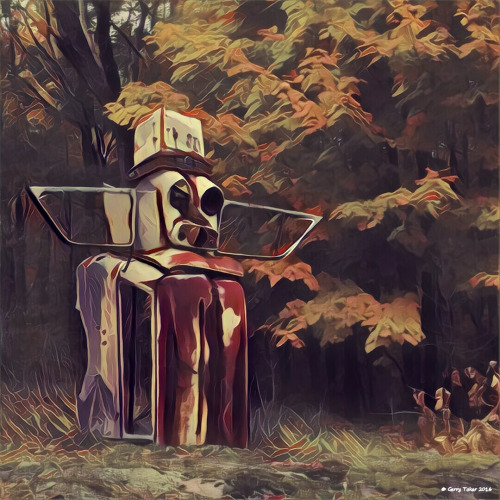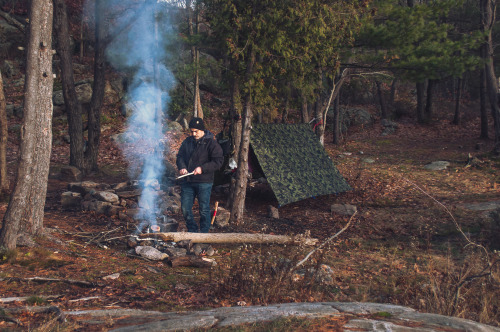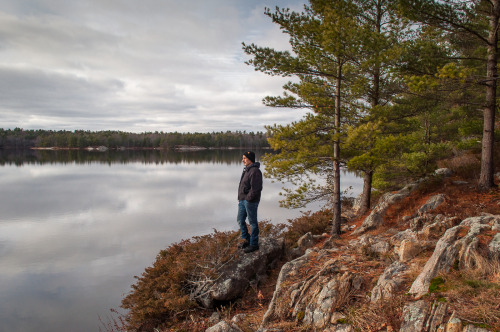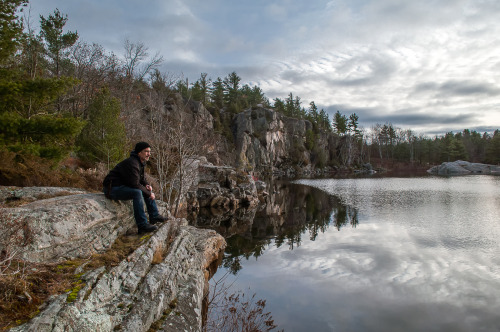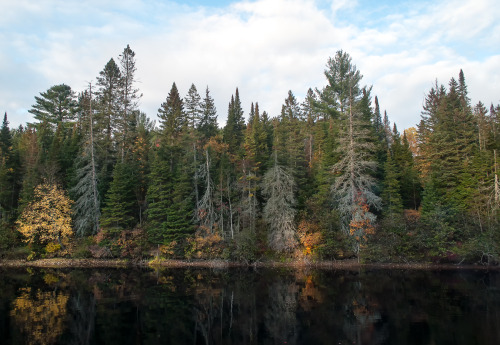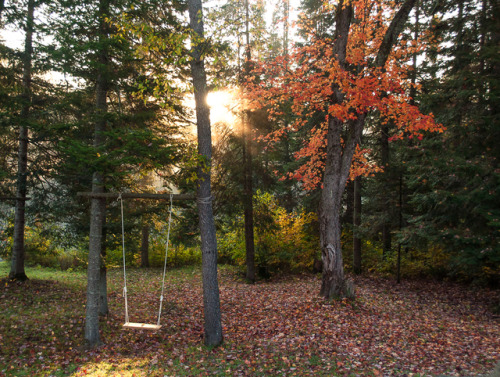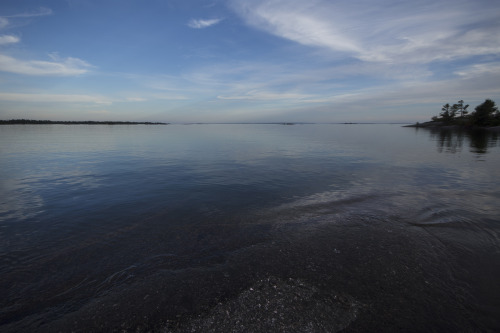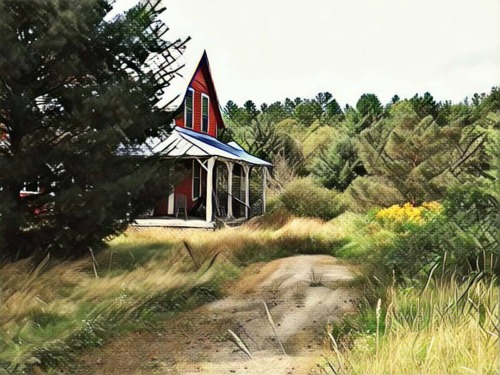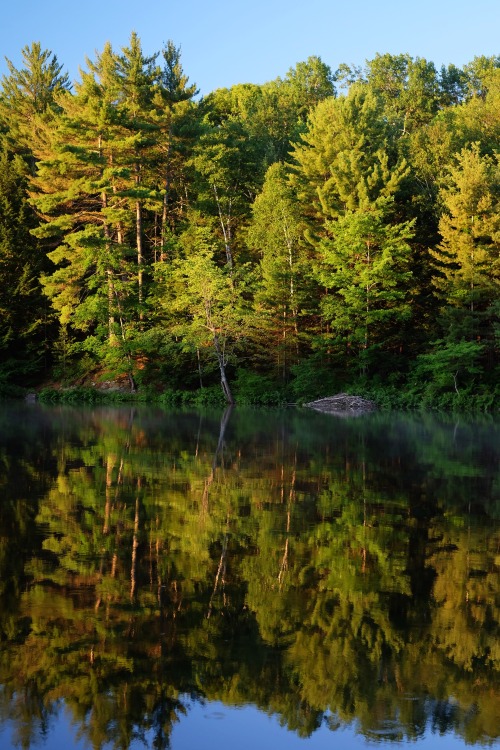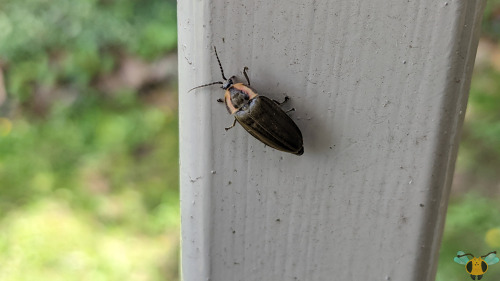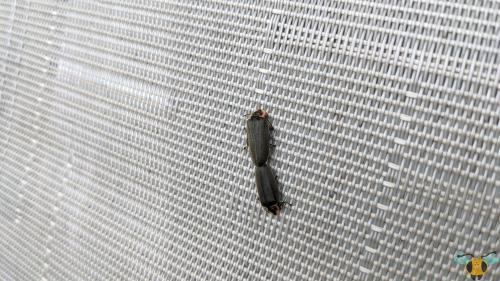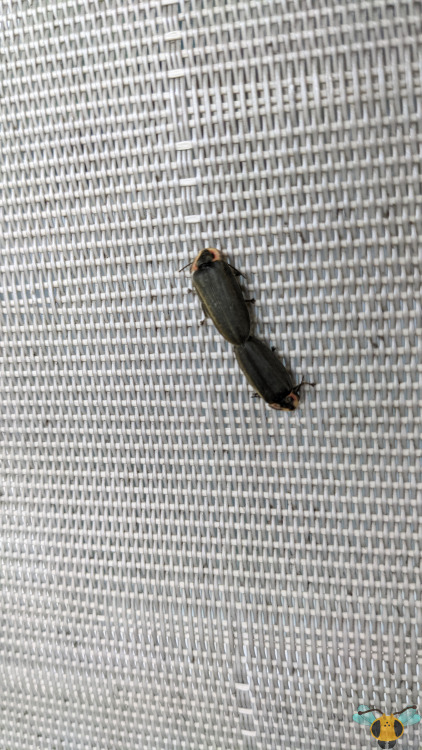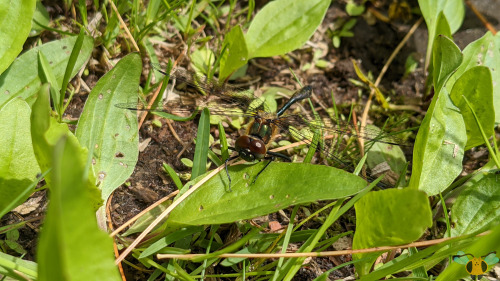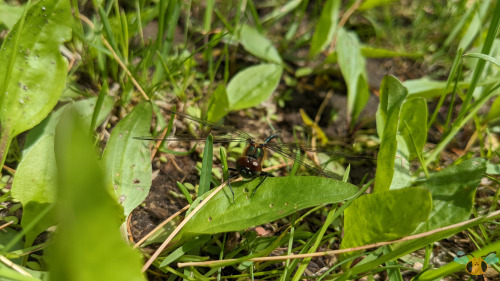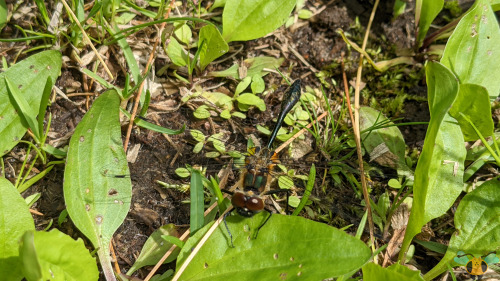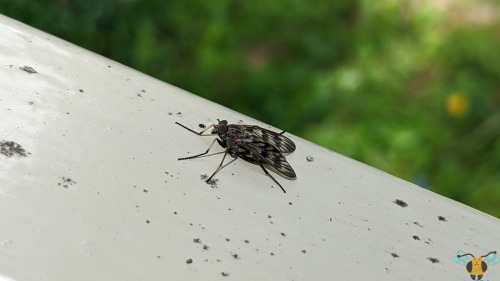#muskoka
Homage to Emily Carr… (Prisma Edit)
Moon River, ON. Canada
~Coast to Coast~Shades of Black & White~Abstractions~
Post link
Springtime in the North…
Minett, ON. Canada.
Coast to Coast~Shades of Black & White~Abstractions~
Post link
Winter Firefly - Ellychnia corrusca
Let’s have one more set of pictures from the Muskoka visit to round things out, shall we? Not to toot my horn but I’m very proud of Picture 1 with opened wings and exposure to the abdomen hidden beneath the shell. Interestingly, there was a short pause after opening the wings before taking flight. Anyways, the beautiful night sky of cottage country (which is dotted with many stars unobscured by light pollution) is the perfect environment for the illumination of insects like this one. Or at least it would be if this specie of Firefly was able to light up its rear as the name might hint. For this specie, only the larvae and pupae can glow, the adults losing this ability upon maturation. It’s not all bad news though since this Beetle spends most of its time as a larva anyways, scourging around the leaf litter and under logs in search of insects and slug to eat. Their diet changes upon reaching adulthood, shifting from carnivorous to hungering for sap and flowers. If you go looking for the larvae, know that they are quite a rare find. Fortunately you’ll know them when you see them as they might glow and they closely resemble Trilobite Beetles. If you can’t find the larvae, adults will be more out in the open. They fly during the daytime and crawl about on trees, leaves and man-made structures.
The adults should be recognizable enough with the colors of their armor, their antenna type and their (relatively) large size compared to other Fireflies. The specimens you see before you are likely those that have emerged after an overwintering stint as adults. It’s the ability to survive the harsh winter that gave this Beetle its name, and with the weather turning warm, it’s time to find a mate. If the temperatures can hold steady, there could be a second generation, but these are another generation from the eggs laid earlier in the year. Nevertheless, the Fireflies that emerged from winter waste no time forming mating pairs. It’s not really possible to discern which Beetle is the female or the male in these pictures (you’d need to flip them over to check the final abdomen segment which would be quite rude). To avoid sitting on them, you can persuade them to climb on a stick and relocate them to a more green environment…as I did. I was called up to the balcony to investigate what looked like a Caterpillar, but was in fact the Beetles you see before you. I can sort of see the resemblance. They can move together (even turning without a break) to escape a perceived threat, though it looks more like one is taking the lead and dragging the other along. While transporting them, the leaders switched occasionally, resulting in a change of direction. Fascinating!
Pictures were taken on May 28, 2022 in Muskoka with a Google Pixel 4. For anyone interested in more information, I enjoyed reading this paper by Rooney and Lewis covering the Winter Firefly.
Post link
Racket-Tailed Emerald - Dorocordulia libera
As promised, another beautiful insect from the Muskoka cottage scene by the lake. This one has wonderful shades of metallic green on its thorax plates which make it a sight to behold if you find one. You may think that those vibrant colors are what give this insect its name, and while there is a bit of truth to that, the real answer is much more interesting, and I truly wish these pictures could showcase what I’m about to describe. Belonging to the family CorduliidaeorEmerald Dragonflies, this new family is a first for the blog, joining the quick Skimmers (Libellulidae) and the large Darners (Aeschnidae) (and the one Clubtail also found in cottage country). The Emerald family received their name from the vibrant green eyes that most species tend to display when they fully mature. You’ll need to look at other pictures for reference, but I promise you, these eyes are saturated with a lush light-green. This specie can have that eye color too, but sadly not this individual, which leads me to deduce that this individual may be an “immature” adult, needing a little more time in the sun.
While other Dragonflies have differing male and female characteristics, both males and females can have green eyes, at least from what I’ve read and seen. This in mind, there’s a much easier way to tell male and female Emeralds apart: look to the tips of their abdomens! No matter what eyes they have, the males will have three prominent claspers and females have an elongated plate and/or diminished claspers on the abdomen tip. The pictures here don’t really show the best view of the abdomen, but I see no claspers. With this information in mind, I’ll know what to look for next time. Continuing on, as the name suggests, the widened tail tip has given this beautiful creature its name, “racket tail”. Keep an eye out for this feature if a green-eyed Dragonfly zooms by you. Also, while the top of the body shows greens of various intensities, the undersides of this Dragonfly are striped with yellow. She is truly stunning and will likely go on to birth several new Dragonflies that will call the lake in front of the cottage home in their young naiad forms. After spending their days hunting prey in the water, they too will emerge will emerald coloration to hunt the many flying insects of the cottage environment. MidgesandMosquitos provide an all you can catch buffet for them, and there are larger insects to try and catch such as the elusive Alderfly.
Pictures were taken on May 28, 2022 in Muskoka with a Google Pixel 4.
Post link
Common Snipefly - Rhagio mystaceus
I’ve just returned from a cottage trip up in Muskoka with many insect pictures to share. With the weather turning warmer across Ontario, many new insects have begun to emerge. Especially those insects that aren’t too far from the wooded areas or lake Muskoka. It’s still a bit too early for everyone to come outside, but there were May Beetles flying headfirst into the cottage’s walls, having been drawn in by the night lights. Night lights also draw in Crane Fliesand Moths (latter identification is ongoing) which have plenty of places to perch and rest thanks to window screens. In the daytime, other insects can be found rummaging and flying around cottage country including the subject of today’s post. I’m reluctant to post about another Fly so soon after the last one, but it’s another new specie for the blog and may serve as an educational tool for those in cottage country, the woods or marshes. Plus, it’s not every day that I find a Snipe Fly sporting beautifully patterned wings and posing for nice pictures. This specimen is a female which can be discerned by the gap between its compound eyes. Comparing it to the other species of this blog, it has the classic Rhagio Snipe Fly body shape and long legs. When first finding it, I wasn’t sure what this insect was, and I wouldn’t be sure until closely looking at Picture 2 and noticing a long, tapering abdomen with faint yellow stripes.
I was hesitant to approach at first. Why? Cottage country can be notorious for biting Flies, especially in areas by lakes, woods and fields. Specifically Deer Flies and Horseflies, both of which tend to present with patterned wings. Muskoka definitely has Horseflies, but this is too small and spindly to be that, so I pondered whether this was a Deer Fly. Thankfully not, as Deer Flies tend to have bright, metallic eyes with scintillating patterns. Breathe a sigh of relief if you see this Fly near you as this specie is reported not to be frequent biters (if at all) of humans. Other species of the west may bite, but not to the same degree as a Horsefly. The Snipe Fly mouthparts seem to be for jabbing rather than slicing. Getting off that subject, I’ll end this post by mentioning that this insect has a look-a-like that you should be aware of: R. punctipennis: the Lesser Variegated Snipe Fly! To tell these two down-lookers apart, pay close attention to the wings and thorax. The wings are patterned differently and thorax’s parallel bands are different too. The Common Snipe Fly has a little divide in between the middle band (zoom in on Picture 5) and the scutellum appears discolored compared to the scutum (smaller thorax plate compared to larger thorax plate). It’s much less complicated than it sounds, trust me, but the take away here is that this Fly isn’t likely to bother you during a cottage summer day.
Pictures were taken on May 28, 2022 in Muskoka with a Google Pixel 4. Another Muskoka cottage insect will come on Friday. A larger, more metallic insect will be examined. Which one could it be?
Post link
During an online municipal committee meeting this week for the District of Muskoka, Laurie Munro spoke in favour of seasonal Muskoka residents (i.e. cottage owners) having the same level of political representation that year-round residents have. Munro was attending the meeting to lobby on behalf of 18 cottage association organizations in Muskoka.
Munro stated that seasonal residents are currently “second-class citizens” and then, addressing elected officials directly, he compared them to George Floyd: “For 50 years towns who are in the minority have effectively had their knee on the neck of the townships 12 votes to 10. Deep down I think you know this is wrong. You’re all decent Muskokans, and you’ve all had political success because you are. This is kind of your George Floyd moment. Sure, you can look the other way and keep the pressure on, or you can ease up on the neck.”
Shot by @lanedorsey for my homies @lordsofgastown @tylermichaelmotorcycle. Such a sick custom vest ☇
The boy @filthy_flawless making sure I always rock the @apothecary87 #muskoka beard balm
Post link


